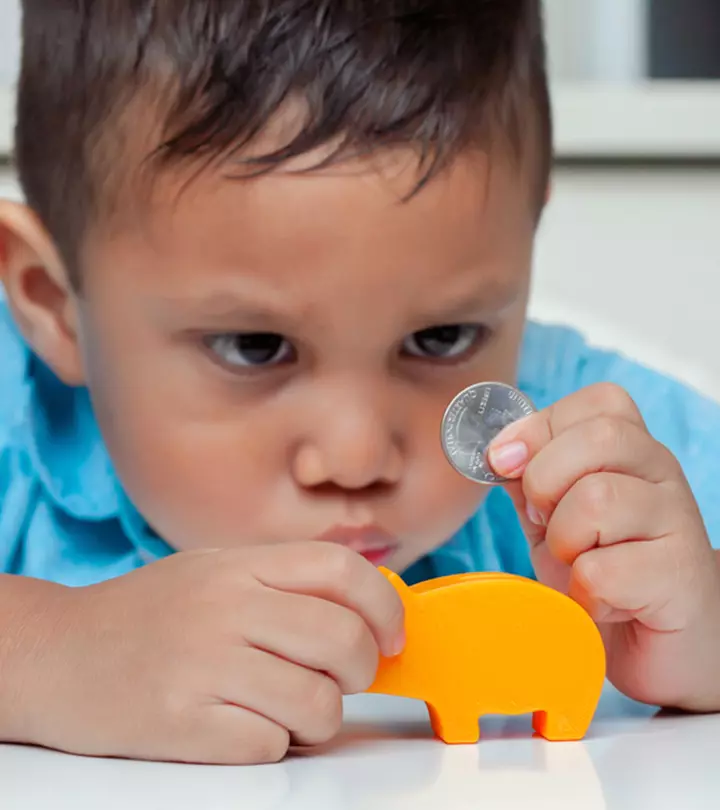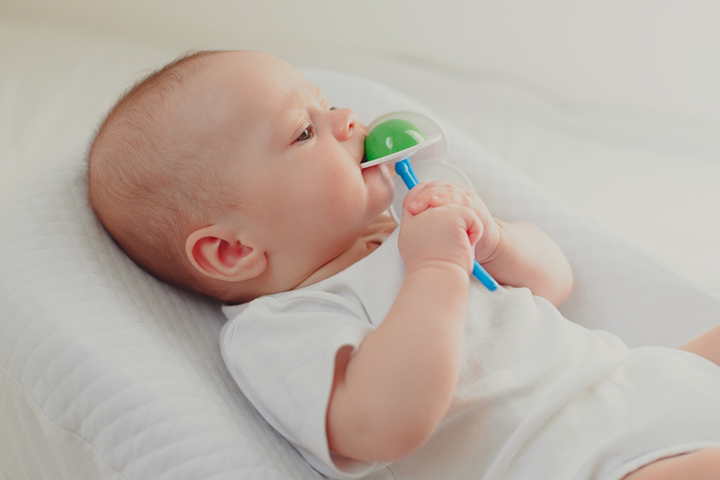
Image: Shutterstock
The first year of a baby’s life is full of developments. The parents are in for a great ride with their child as they develop new skills one month after the other. One the biggest milestones in a baby’s developmental journey is when they start reaching for an object with their hands and fingers. This phenomenon is known as the pincer grasp (1). It is quite an exciting milestone for a child who could not once hold their head straight. Read on to know why pincer grasp is important for your child’s development and what exactly it is.
What Is Pincer Grasp?
Image: Shutterstock
Pincer grasp refers to an essential motor skill that entails holding or picking up an object by taking it in between the forefinger and thumb. When your baby becomes ready to use pincer grasp they will start picking up small objects like little pieces of food and tiny toys. Mastering the pincer grasp is an essential foundational step that paves the way for other motor skills like holding a pencil in between fingers in future.
From When Do Babies Start Developing Pincer Grasp?
Image: Shutterstock
Though development cannot be generalized, most babies develop pincer grasp within the age bracket of 8-10 months. During the initial days of developing the pincer grasp, children generally hold the base portion of the objects they are trying to hold. They use their index finger and thumb in the process.
Like all other developmental processes, this one also gets perfectioned by practice. With enough time and patience, babies reach a stage where they are able to pick up certain objects by holding them in between the pad of their thumbs and their forefingers. This generally happens by the time they are a year old.
Helping A Baby To Strengthen Their Pincer Grasp
Your baby should naturally start practicing the pincer grasp as long as you are keeping something holdable and pickable within their grasp. To help their development, you can give them little things to hold and pick up so that the small muscles of their hands can be strengthened. A few tips to help you better understand the process are discussed below.
1. Start Serving Finger Foods
Image: Shutterstock
As soon as you notice that your child is showing signs of grasping and holding, start adding finger foods to their diet chart. You can start with small pieces of chopped food, green peas, or cereals. You will be amazed to see how your child starts with crudely holding the food using the whole hand and then gradually moving to use only their thumb and index finger. Make sure you keep a sharp eye while the child is putting the food in their mouth to ensure no unfortunate incident of choking happens.
2. Buy Them Knobbed Puzzles To Play With
Playing with knobbed puzzles with your kids is a great way to help in their pincer grasp development. You should look for large wooden puzzles that have knobs on them. While playing with your child show them how you are grasping the knobs using your forefinger and thumb. Continue to do this grasping motion repeatedly while playing the puzzle to give your child a better idea regarding how the holding process works.
Knobbed puzzles are great for children developing the pincer grasp because not only are they easy to hold but also are safe from the choking hazard. However, just to be safe, you should not leave your child alone with these puzzles as they might try and put them in their mouth. You should also buy the puzzles that are made from higher quality materials so that they don’t break after repeated usage.
3. Give Them Small Toys
Image: Shutterstock
Giving your children small toys is a great way to help them start their practice of grasping. You would understand when the child starts showing the signs of pincer grasp. As soon as you notice the signs, bring them cute, small, and safe toys so that they can practice their holding abilities. Make sure that the toys are free of any sharp edges and are made from good materials so that the child is not harmed while playing with them. You should also keep an eye on them all the while they are playing with them as they might put them in their mouths and choke.
It is natural for babies to develop pincer grasp within 12 months of age. In case you notice your child is not showing any signs of developing this grasp even after reaching a year, consider talking to your child’s pediatrician. However, there is nothing to worry about even if there is some delay as the pediatrician will help you out with suggestions and tips so that your child can start developing the pincer grasp.
















